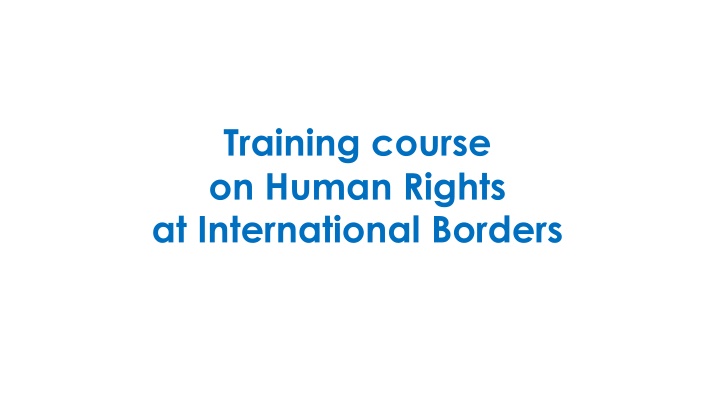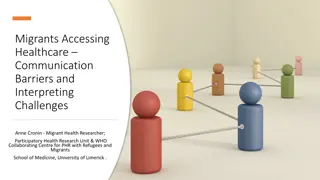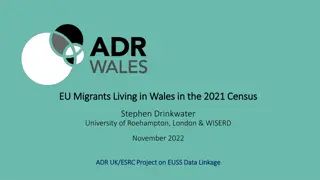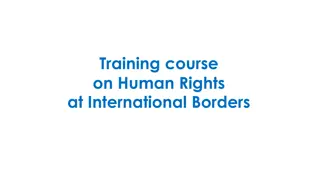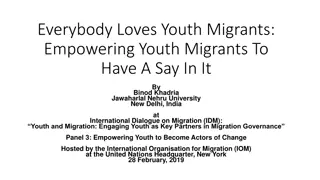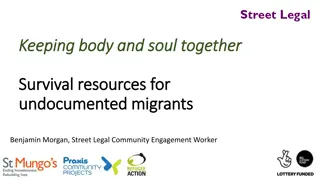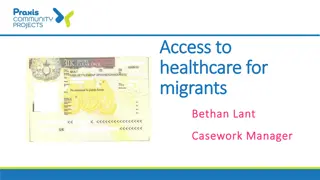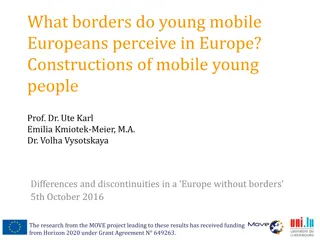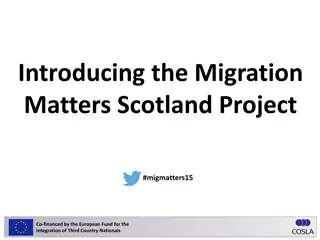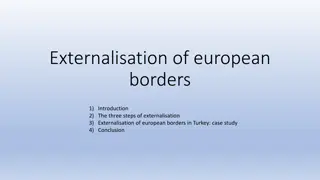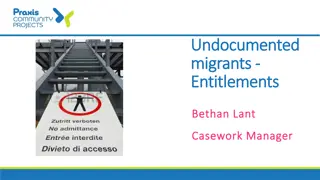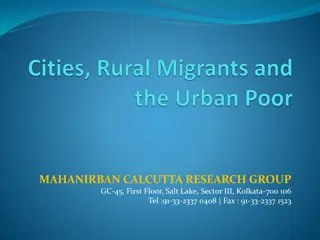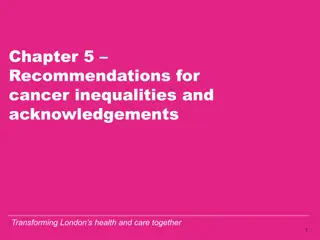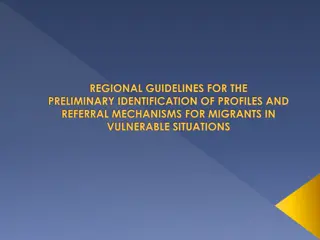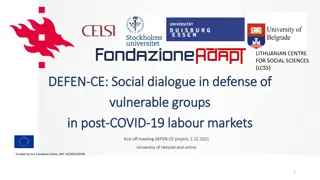Vulnerable Situations of Migrants at International Borders
This training course focuses on migrants in vulnerable situations at international borders, discussing why special consideration is needed for their human rights protection. It covers the concept of vulnerable situations, reasons for focusing on such migrants, and the specific protection they require due to various factors. By the end of the course, learners will be able to identify vulnerable migrants and understand the gaps in international protection for this group.
Download Presentation

Please find below an Image/Link to download the presentation.
The content on the website is provided AS IS for your information and personal use only. It may not be sold, licensed, or shared on other websites without obtaining consent from the author.If you encounter any issues during the download, it is possible that the publisher has removed the file from their server.
You are allowed to download the files provided on this website for personal or commercial use, subject to the condition that they are used lawfully. All files are the property of their respective owners.
The content on the website is provided AS IS for your information and personal use only. It may not be sold, licensed, or shared on other websites without obtaining consent from the author.
E N D
Presentation Transcript
Training course on Human Rights at International Borders
Session 2 Migrants in vulnerable situations at international borders
Session 2 learning objectives After this session, learners will be able to: Describe why the training course gives special consideration to migrants in vulnerable situations Identify situations of vulnerability in the context of migration
2.1. Migrants in vulnerable situations
2.1.1. Why focus on migrants in vulnerable situations Many of today s migratory movements are not entirely voluntary Many migrants fall outside the specific legal categories that guarantee international protection, e.g., refugee , trafficked person , among others There is need to understand the protection gaps experienced by migrants who do not fit the criteria for refugee protection, but who are not moving entirely voluntarily and are therefore in need of human rights protection
2.1.2. Migrants in vulnerable situations: concept Persons in the context of migration who are unable effectively to enjoy their human rights [and] are at increased risk of violations and abuse They are entitled to call on a State s heightened duty of care It is important to identify individuals in vulnerable situations so as to determine appropriate specific protection to which they are entitled and to refer them to the appropriate services It is important to recognize that, even in vulnerable situations, migrants exercise autonomy and make their own
2.1.3.What is meant by vulnerable situations Some migrants need specific protection of their human rights because of: Situations that made them leave their country of origin Circumstances/conditions in which they travelled and/or experienced/faced on arrival at destination Personal characteristics such as age, gender identity, disability, health status, among others
2.1.4. Ensuring a human rights-based approach to migrants in vulnerable situations Recognizes that situational and personal vulnerability are created by external factors Seeks to empower migrants to claim their rights Ensures the situation of each person is assessed individually Is aware of the impact of discrimination and stereotyping
2.1.5. Gender and migrants in vulnerable situations Gender interrelates with situations that migrants experience at home, in transit, at destination and on return. Gender may affect the risks and consequences of human rights abuses that migrants face, and their recourse to assistance, justice and remedy. Note that: Not all women migrants are in vulnerable situations, however, due to pervasive gender- based discrimination, some will require a heightened duty of care. It is important to respect the individual autonomy
2.1.6. Exercise: Identifying vulnerable situations in countries of origin, transit and destination In your group, consider vulnerable situations that might: A.Cause people to leave their country B. Occur during transit, at international borders or once they reach their destination C.Be linked to an individual s identity or circumstances Write your points on the card or on the flip chart assigned to your group. Then move on to another flip chart and
Situations that cause people to leave their country Persecution Conflict or generalized violence Risk of torture and other cruel, inhuman or degrading treatment or punishment Natural disaster or climate change Lack of enjoyment of their human rights, such as health or education Family reunification, including children travelling unaccompanied
Situations that migrants may encounter during their journey and at destination Sexual and gender- based violence, other violent crime, kidnapping Trafficking or forced labour Abusive smuggling Arbitrary detention Torture or trauma in transit Family separation Hunger, dehydration Lack of access to means of communication
Situations that may be associated with a person s identity, condition or circumstances Children, especially unaccompanied or separated children Older persons Persons at risk owing to their sexual orientation or gender identity Persons with disabilities Pregnant or nursing women, girls or other individuals who may not identify as women Certain health conditions, including HIV
2.1.7. Considerations for identifying migrants in vulnerable situations May or may not have physical signs of injury May not volunteer information or may be reluctant to discuss their experiences May have specific needs: medical, sexual/reproductive health care May display various indicators of trauma: impaired memory, difficulty focusing, inability to trust, tendency to startle easily, anxiety, nightmares, inability to sleep, headaches, loss of appetite, digestive problems Carry out a sensitive gender-/age-responsive inquiry to avoid generating unnecessary distress and retraumatizing the migrant
